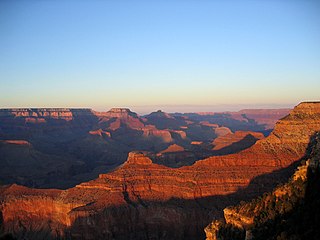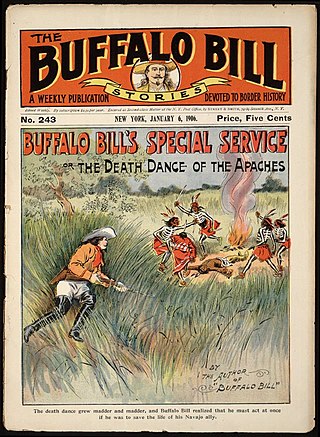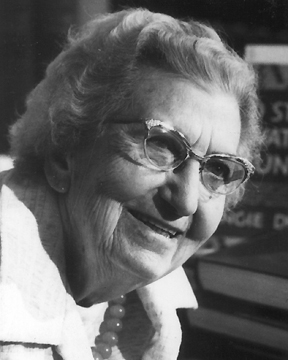
The Great Plains are a broad expanse of flatland in North America. The region is located just to the east of the Rocky Mountains, much of it covered in prairie, steppe, and grassland. They are the western part of the Interior Plains, which include the mixed grass prairie, the tallgrass prairie between the Great Lakes and Appalachian Plateau, and the Taiga Plains and Boreal Plains ecozones in Northern Canada. "Great Plains", or Western Plains, is also the ecoregion of the Great Plains or alternatively the western portion of the Great Plains.

The Western United States is one of the four census regions defined by the United States Census Bureau.

The American frontier, also known as the Old West, and popularly known as the Wild West, encompasses the geography, history, folklore, and culture associated with the forward wave of American expansion in mainland North America that began with European colonial settlements in the early 17th century and ended with the admission of the last few contiguous western territories as states in 1912. This era of massive migration and settlement was particularly encouraged by President Thomas Jefferson following the Louisiana Purchase, giving rise to the expansionist attitude known as "manifest destiny" and historians' "Frontier Thesis". The legends, historical events and folklore of the American frontier, known as the frontier myth, have embedded themselves into United States culture so much so that the Old West, and the Western genre of media specifically, has become one of the defining features of American national identity.

Western fiction is a genre of literature set in the American Old West frontier and typically set from the late eighteenth to the late nineteenth century. Well-known writers of Western fiction include Zane Grey from the early 20th century and Louis L'Amour from the mid-20th century. The genre peaked around the early 1960s, largely due to the popularity of televised Westerns such as Bonanza. Readership began to drop off in the mid- to late 1970s and reached a new low in the 2000s. Most bookstores, outside a few west American states, only carry a small number of Western fiction books.
The Comancheros were a group of 18th- and 19th-century traders based in northern and central New Mexico. They made their living by trading with the nomadic Great Plains Indian tribes in northeastern New Mexico, West Texas, and other parts of the southern plains of North America. The name "Comancheros" comes from the Comanche tribe, in whose territory they traded. They traded manufactured goods, flour, tobacco, and bread for hides, livestock and slaves from the Comanche. As the Comancheros did not have regular access to weapons and gunpowder, there is disagreement about how much they traded these with the Comanche.

Amiel Weeks Whipple was an American military officer and topographical engineer. He served as a brigadier general in the American Civil War, where he was mortally wounded at the Battle of Chancellorsville. Among his many survey assignments for the US War Department, he participated in the difficult survey of the new United States and Mexico boundary and led the survey of a possible transcontinental railroad route along the thirty-fifth parallel from Arkansas to Los Angeles.

This timeline of the American Old West is a chronologically ordered list of events significant to the development of the American West as a region of the continental United States. The term "American Old West" refers to a vast geographical area and lengthy time period of imprecise boundaries, and historians' definitions vary. The events in this timeline occurred primarily in the portion of the modern continental United States west of the Mississippi River, and mostly in the period between the Louisiana Purchase in 1803 and the admission of the last western territories as states in 1912 where most of the frontier was already settled and became urbanized; a few typical frontier episodes happened after that, such as the admission of Alaska into the Union in 1959. A brief section summarizing early exploration and settlement prior to 1803 is included to provide a foundation for later developments. Rarely, events significant to the history of the West but which occurred within the modern boundaries of Canada and Mexico are included as well.

The frontier myth or myth of the West is one of the influential myths in American culture. The frontier is the concept of a place that exists at the edge of a civilization, particularly during a period of expansion. The American frontier occurred throughout the 17th to 20th centuries as European Americans colonized and expanded across North America. This period of time became romanticized and idealized in literature and art to form a myth. Richard Slotkin, a prominent scholar on the subject, defines the myth of the frontier as "America as a wide-open land of unlimited opportunity for the strong, ambitious, self-reliant individual to thrust his way to the top."

According to the Encyclopedia of Oklahoma History and Culture, there were two trails that may have been known as the California Road at the time of the California Gold Rush. A southerly route, which ran through present-day Oklahoma, along the Canadian River. A northern route was usually called the California Trail.

Angie Elbertha Debo, was an American historian who wrote 13 books and hundreds of articles about Native American and Oklahoma history. After a long career marked by difficulties, she was acclaimed as Oklahoma's "greatest historian" and acknowledged as "an authority on Native American history, a visionary, and an historical heroine in her own right."

The following works deal with the cultural, political, economic, military, biographical and geologic history of pre-territorial Montana, Montana Territory and the State of Montana.
Dan Louie Flores is an American writer and historian who specializes in cultural and environmental studies of the American West. He held the A.B. Hammond Chair in Western History at the University of Montana in Missoula, Montana until he retired in May 2014.

The following works deal with the cultural, political, economic, military, biographical and geologic history of pre-territorial Wyoming, Wyoming Territory and the State of Wyoming.

The following published works deal with the cultural, political, economic, military, biographical and geologic history of pre-territorial Oregon, Oregon Territory and the State of Oregon.

This is a bibliography of the U.S. State of Colorado.

Rodman Wilson Paul was an American historian who taught at the California Institute of Technology. He was known primarily as a foremost authority on California mining and agricultural Native American history.
Wilbur R. Jacobs was an American historian, with a special interest in Native American, Western, and Environmental history.
Jose Piedad Tafoya, sometimes called the Prince of the Comancheros, was one of the more notable traders from New Mexico who traveled throughout the Southern Great Plains exchanging goods with the Comanches and their allies the Kiowa for stolen horses, cattle, and sometimes human captives.
Bibliography of the Western United States is a small selection of the most useful books and articles on the Western United States.













